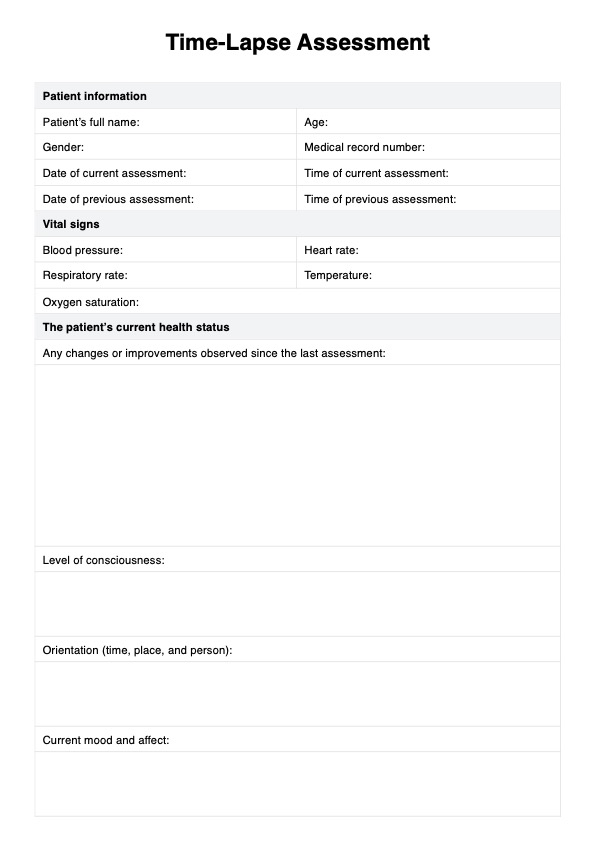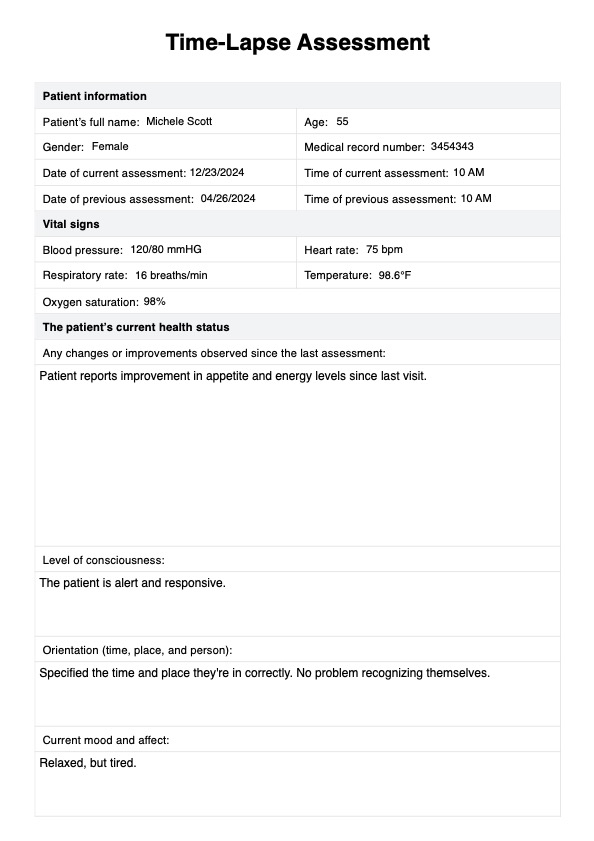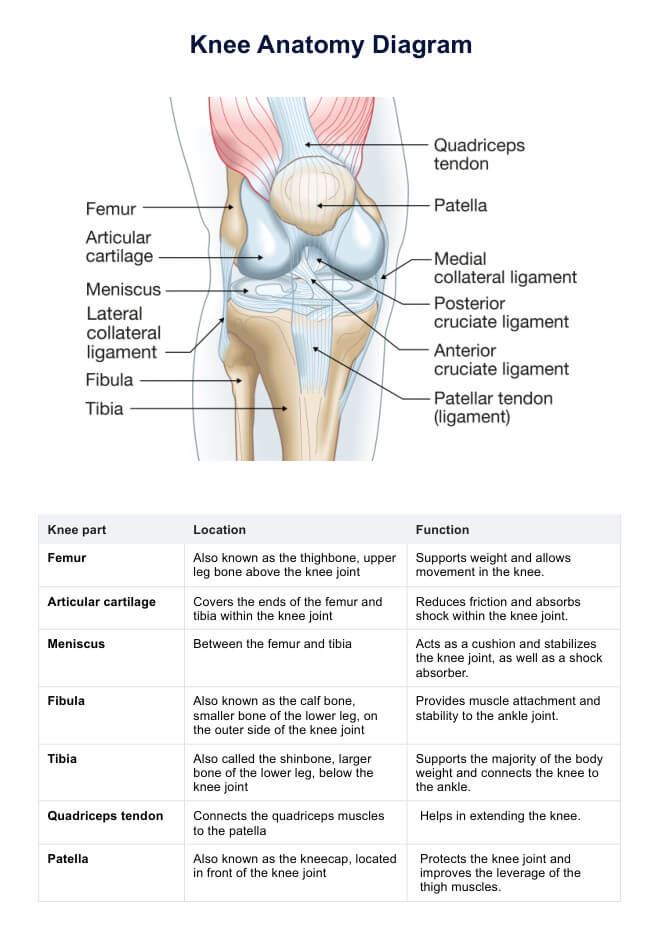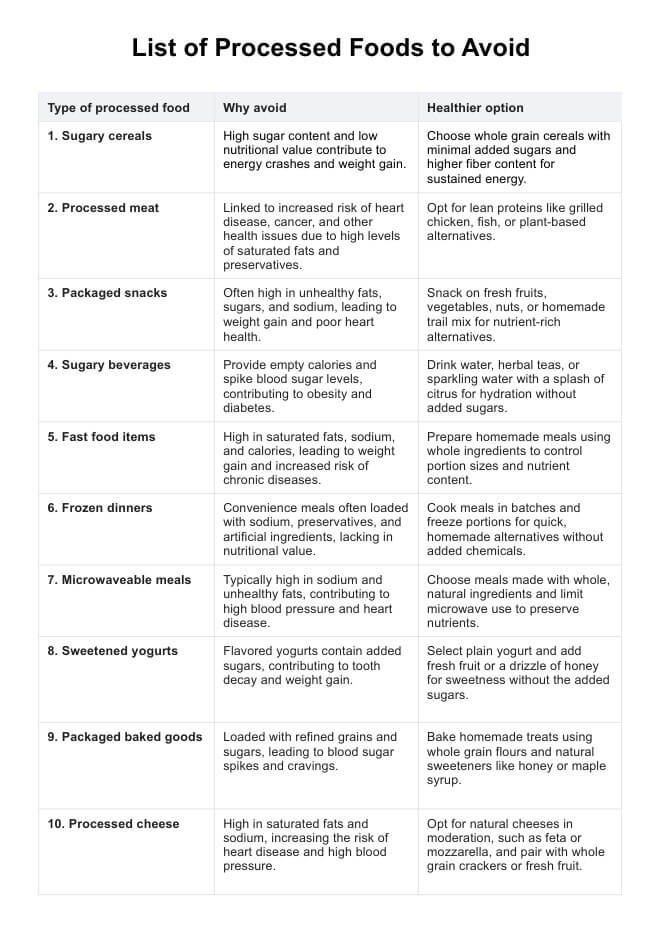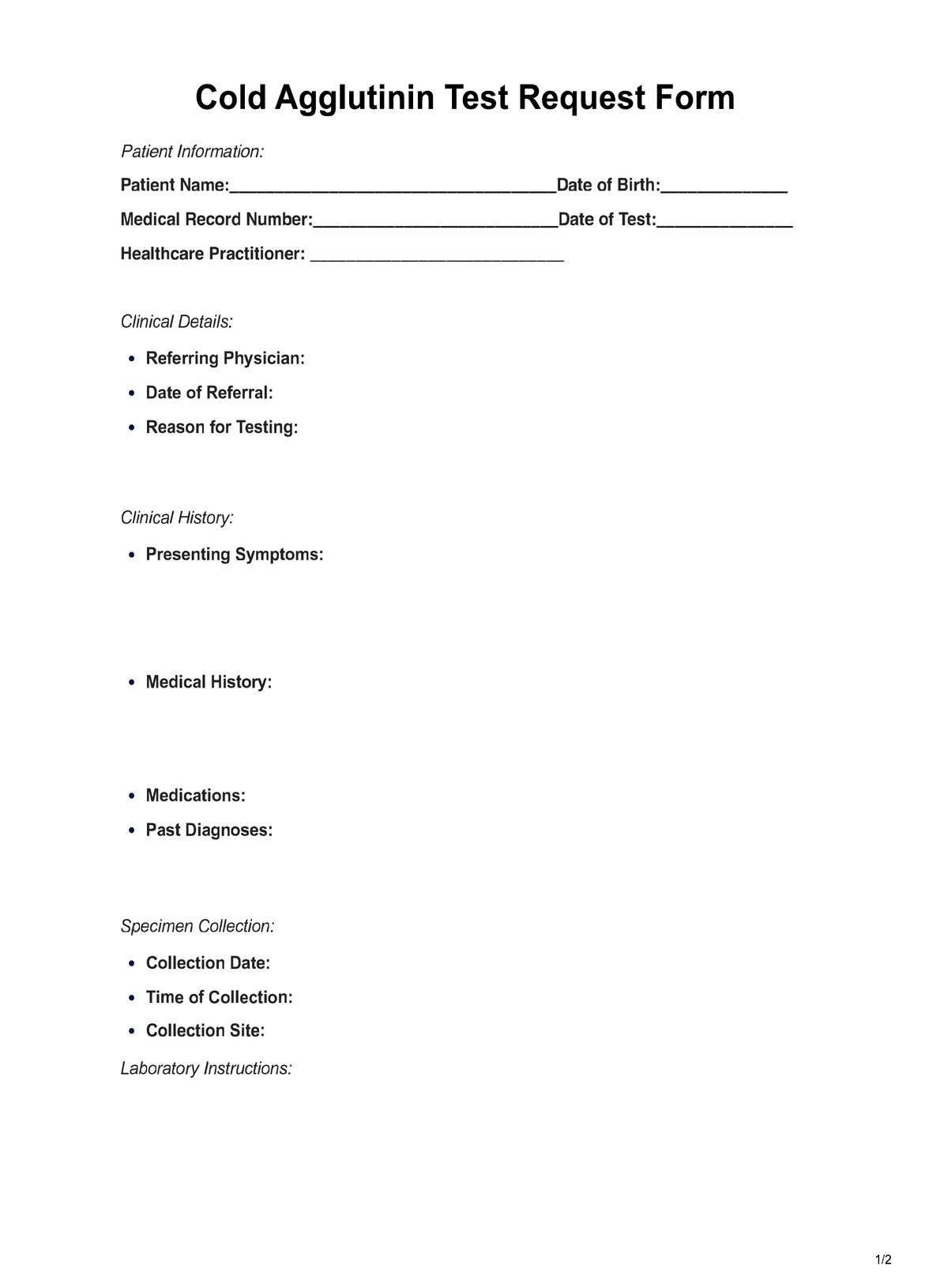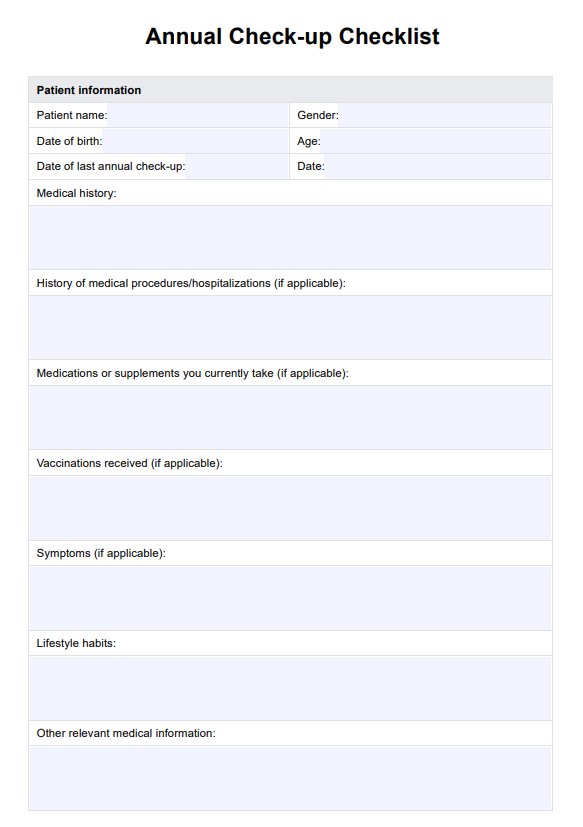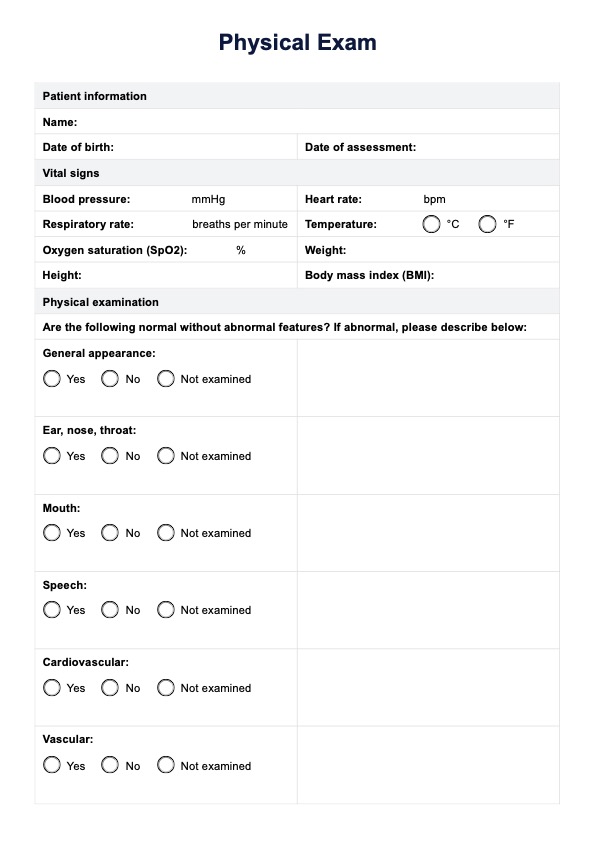Time Lapse Assessment
Use our Time Lapse Assessment template to compare a patient's condition based on previous results and track changes over time!


What is a Time Lapse Assessment?
A Time Lapse Assessment is a planned reassessment of a patient's current status compared to previous assessment data (e.g., detailed physical examination procedures conducted before, etc.). This helps nurses monitor changes in a patient's physical condition over time, especially those with chronic illnesses, recovering from surgery, or receiving home care.
Here's how it works: nurses compare a patient's current health status and health information (vitals, physical state, mental well-being) against baseline data. This meticulous comparison allows for early detection of even subtle changes, enabling prompt adjustments to treatment plans.
Why are Time Lapse Assessments necessary? They:
- Improve patient outcomes: Early detection of changes leads to quicker interventions and better overall care.
- Deliver efficient healthcare: Identifying issues early can minimize unnecessary interventions or costs.
- Provide personalized care: Adjustments to treatment plans ensure patients receive the most effective care for their specific needs.
In essence, Time Lapse Assessments can enhance the quality and responsiveness of patient care over time.
Time Lapse Assessment Template
Time Lapse Assessment Example
How to use this template
Using the Time Lapse Assessment Template for nurses is a straightforward process that enhances systematic and comprehensive patient monitoring. Here are five steps to effectively utilize this template:
Step 1: Gather patient information
Start by filling in the patient's demographic details, such as name, age, gender, and medical record number. This foundational information establishes the context for the assessment.
Step 2: Record previous assessment details
Document the date and time of the last assessment. This step provides a reference point for comparing the patient's health status and helps identify changes over time.
Step 3: Document vital signs and physical assessment
Thoroughly record and assess the patient's vital signs, including blood pressure, heart rate, respiratory rate, temperature, and oxygen saturation. Conduct a detailed physical evaluation from head to toe, noting any abnormalities or improvements.
Step 4: Focus on specific assessments
Document these details if specific health concerns or focused assessments are required. This step ensures the assessment is tailored to address the patient's needs or conditions. After filling out the focused assessment section, document the patient's current status. We've included a section where you can note down the differences between the previous and current assessment data.
The benefits of Time Lapse Assessments
Here are the advantages of Time Lapse Assessments:
Continuity of care
Clear Time Lapse Assessment documentation ensures a complete picture of a patient's health journey. This information is readily available to all healthcare professionals, facilitating seamless care transitions and informed decision-making.
Improved communication
Detailed notes promote clear communication between nurses, doctors, and other healthcare providers. This transparency fosters collaboration and ensures everyone involved is on the same page regarding the patient's care plan.
Enhanced patient outcomes
Well-documented assessments provide a basis for tracking patient progress over time. This ongoing assessment allows healthcare professionals to identify subtle changes, adjust treatment plans, and improve patient outcomes.
Legal protection
Comprehensive documentation serves its primary purpose as a medico-legal record, protecting patients and nurses. It provides a clear timeline of a patient's condition and care, minimizing the risk of misunderstandings or potential legal disputes.
Quality care improvement
Documented assessments contribute to quality improvement initiatives. By analyzing trends and patterns, healthcare facilities can identify areas for improvement and enhance the overall quality of care they provide.
Implementing this medical record template can elevate your practice and client success.
Other types of nursing assessments
Nursing assessments help healthcare professionals gather comprehensive information about a patient's health. Apart from a Time Lapse Assessment, there are various types, each serving a specific purpose in the care continuum:
- Initial assessment: This first encounter paints a broad picture of the patient's health and medical history.
- Focused assessment: These focus on specific concerns like pain or breathing difficulties.
- Emergency assessment: Time is critical. These rapid evaluations ensure quick intervention in urgent situations.
- Ongoing assessment: Continuous monitoring tracks progress and identifies any changes for chronic conditions or post-surgery recovery.
- Mental health assessment: Digging deeper, these assessments evaluate a patient's cognitive function and emotional state.
These different nursing assessments collectively contribute to a holistic understanding of a patient's condition. Nurses utilize this diverse toolkit, like nursing assessment templates, to tailor care plans, identify potential issues, and intervene promptly, ensuring comprehensive and personalized patient-centered care across various healthcare settings.
Commonly asked questions
A patient undergoing postoperative recovery who requires continuous monitoring to track changes in vital signs and pain levels and to determine overall recovery progress would most likely warrant a Time-Lapse Assessment.
They employ techniques such as inspection, palpation, percussion, and auscultation. These methods offer healthcare professionals a systematic data collection method to examine a patient's body, assessing various organs and systems for signs of health or abnormalities.
This assessment involves gathering information, conducting a physical exam, checking vital signs, evaluating mental well-being, and documenting findings to create a complete diagnosis and tailored care plan. This comprehensive process ensures healthcare professionals have the information for informed decision-making and personalized patient care.


